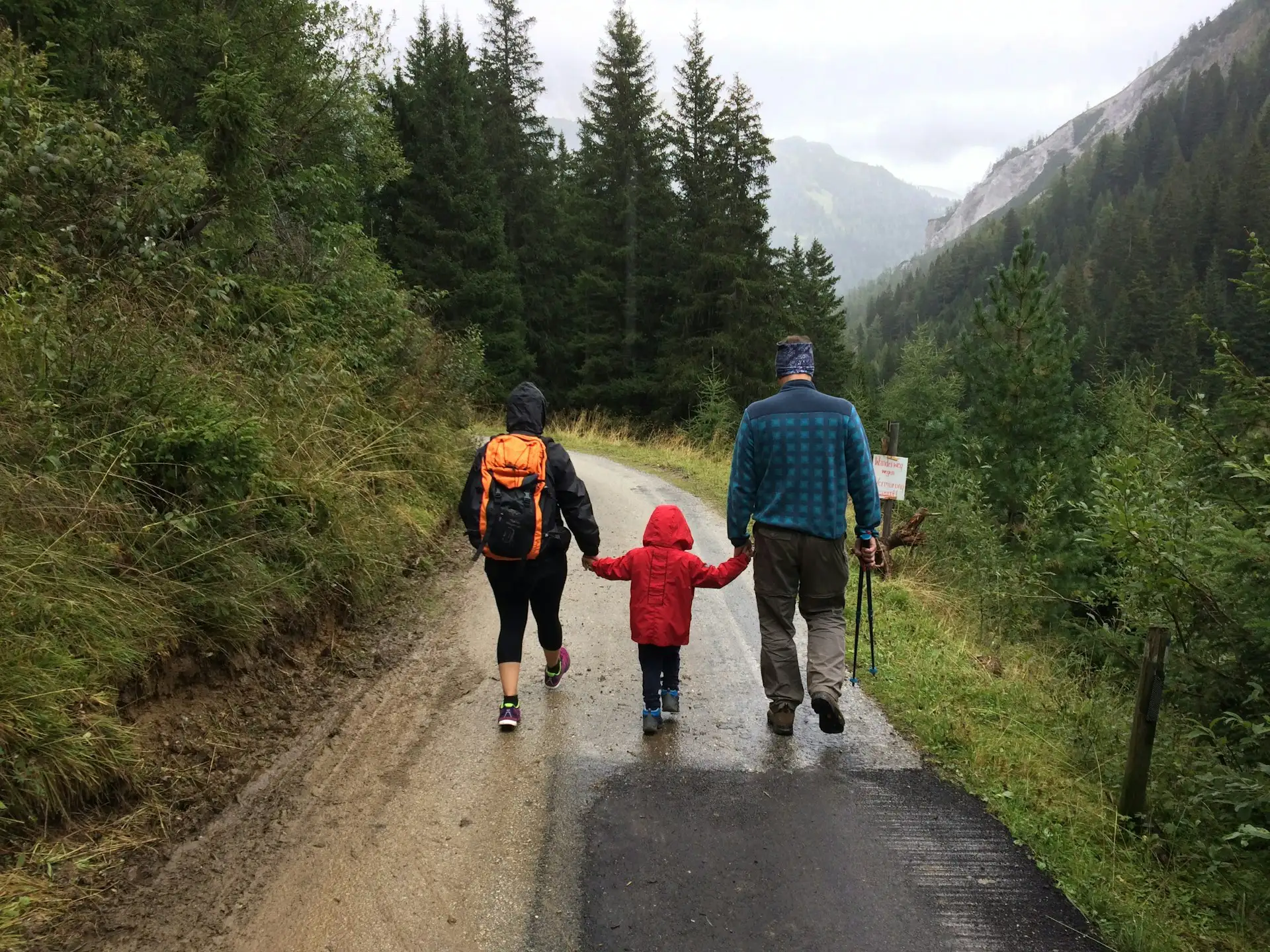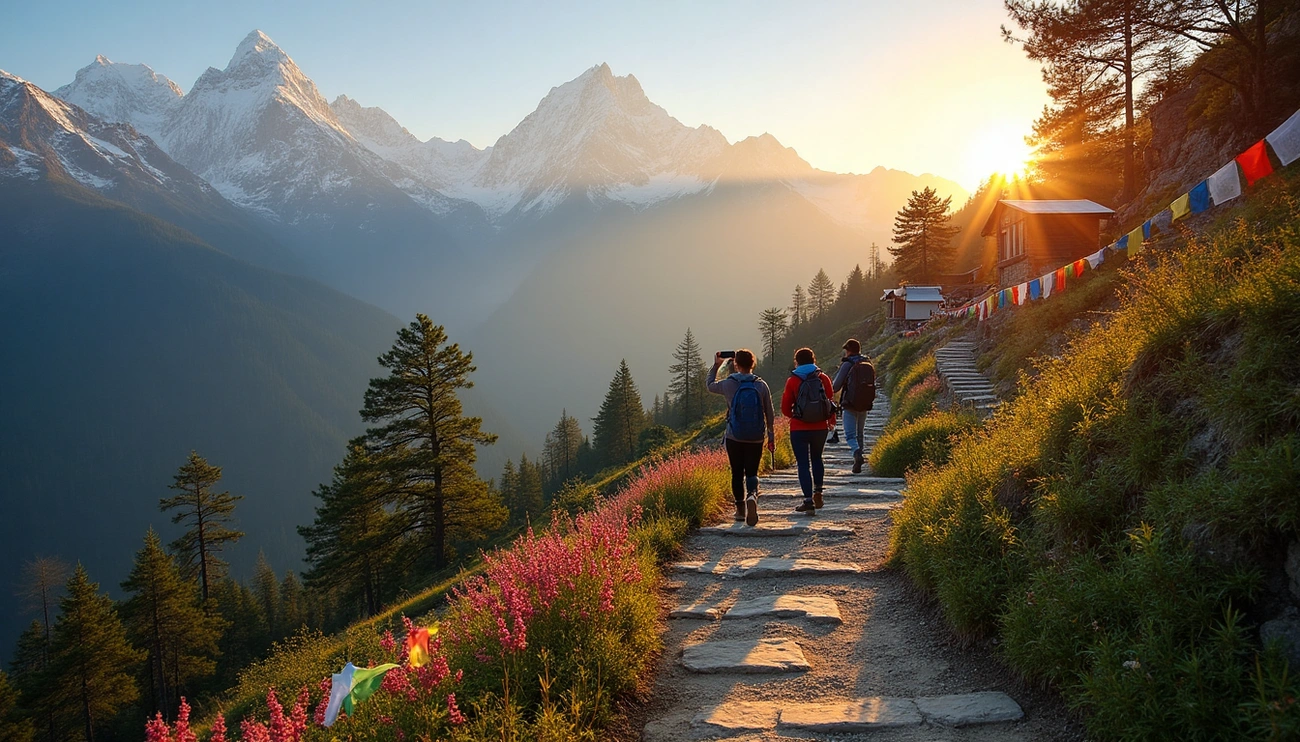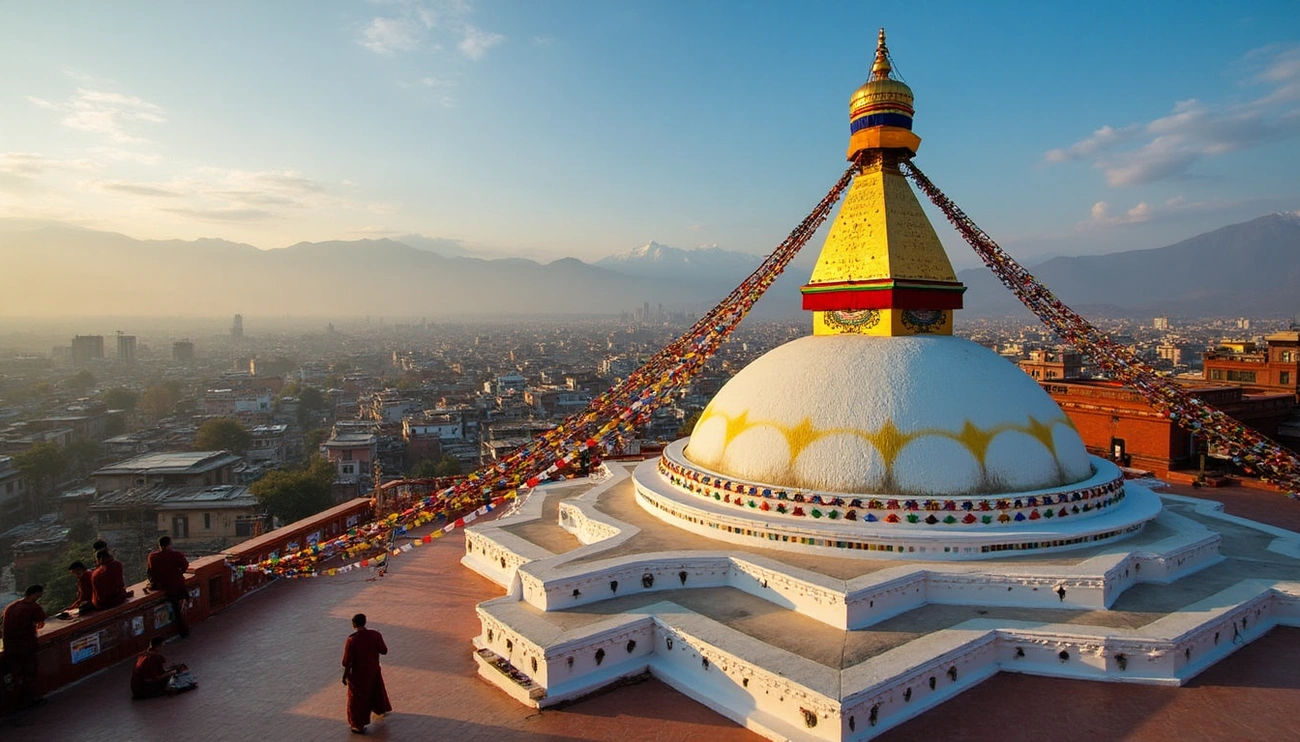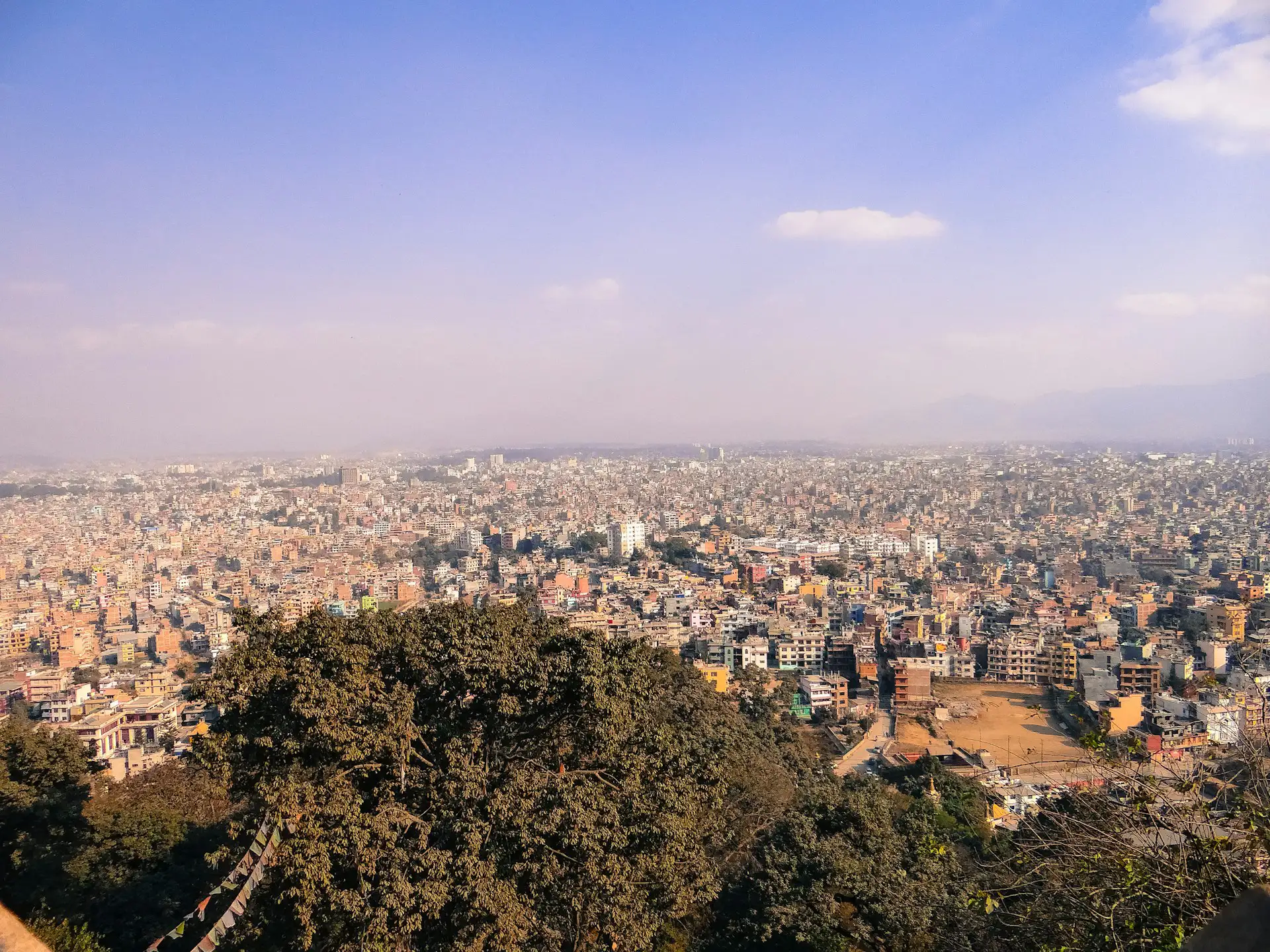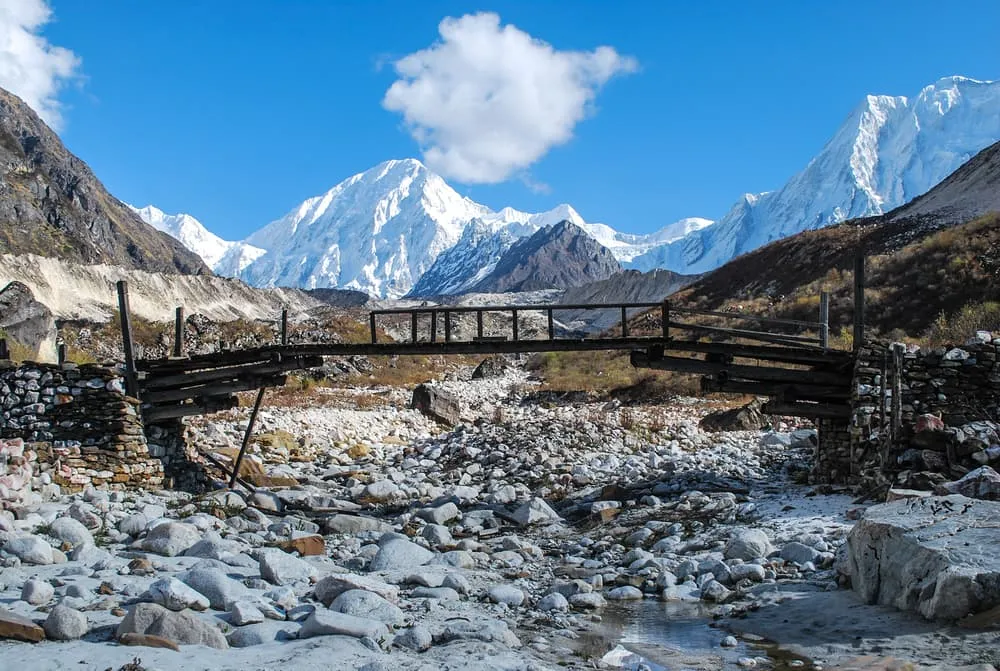Nepal, a land of towering peaks and breathtaking landscapes, is not only a haven for seasoned trekkers but also an ideal destination for families seeking adventure together. With its diverse terrain and well-established trekking routes, Nepal offers a range of trails that are both accessible and rewarding for people of all ages. Whether you’re traveling with young children or teenagers, there are numerous treks designed to accommodate varying fitness levels while ensuring a memorable experience in nature’s embrace.
One of the key reasons Nepal stands out as a family-friendly trekking destination is the availability of well-maintained trails with gradual ascents, making them suitable for younger hikers. Unlike more strenuous high-altitude expeditions, these treks prioritize comfort and safety, allowing families to explore stunning mountain scenery without overwhelming physical challenges. Additionally, many routes pass through charming villages, offering opportunities to engage with local culture, taste traditional cuisine, and stay in cozy teahouses—an enriching experience for both parents and children.
Beyond the natural beauty, Nepal’s trekking infrastructure supports families with essential amenities such as guesthouses, medical facilities, and experienced guides. This ensures that even first-time trekkers can embark on an adventure with confidence. With the right planning and preparation, a family trekking trip in Nepal can be an unforgettable journey filled with shared moments, breathtaking views, and a deep appreciation for the Himalayas.
What Makes a Trek Family-Friendly?
When selecting a trek suitable for families, several key factors must be considered to ensure a safe and enjoyable experience for all members, especially children. First and foremost, safety is paramount. Family-friendly treks in Nepal typically avoid steep, narrow trails with significant drop-offs, opting instead for well-marked paths with minimal risks. These routes often have sturdy bridges over rivers and landslide-prone areas, reducing potential hazards and making the journey more secure for young hikers.
Another crucial aspect is the level of difficulty. Unlike strenuous high-altitude treks, family-oriented routes feature gentle ascents and moderate daily distances, allowing children and less experienced hikers to keep up without exhaustion. These treks usually span shorter durations – ranging from three to seven days – ensuring that even the youngest members can complete them without undue fatigue. Additionally, many of these routes have rest days built into the itinerary, providing time for acclimatization and exploration without rushing from one destination to another.
Accessibility to basic facilities is another essential factor. Family-friendly treks in Nepal often pass through established villages with teahouses, guesthouses, and small medical clinics, ensuring that travelers have access to food, lodging, and emergency care if needed. These settlements offer a comfortable place to rest, warm meals, and even occasional hot showers, making the overall experience more enjoyable for families. Furthermore, many of these treks are accessible via short flights or drives from major cities like Kathmandu, reducing travel fatigue and allowing families to begin their adventure with ease. By prioritizing safety, manageable difficulty levels, and essential amenities, Nepal’s family-friendly treks provide a rewarding and stress-free way to explore the Himalayas together.
Annapurna Base Camp Trek: A Scenic Adventure for Families
The Annapurna Base Camp (ABC) Trek stands out as one of Nepal’s most popular and family-friendly treks, offering a perfect blend of awe-inspiring landscapes and manageable trails. Stretching approximately 13 to 15 days, this trek takes families through lush forests, terraced fields, and traditional Gurung villages, culminating at the base of the mighty Annapurna South. While it reaches an elevation of around 4,190 meters (13,750 feet), the gradual ascent allows for proper acclimatization, making it suitable even for young children and novice trekkers.
One of the highlights of the ABC Trek is the diverse scenery that unfolds along the way. The trail winds through rhododendron and bamboo forests, crosses suspension bridges over gushing rivers, and passes through charming villages like Manang and Chhomrong. These settlements provide opportunities to experience local culture, with homestays and teahouses offering warm hospitality and traditional Nepali meals. Additionally, the trek includes a visit to Machhapuchhre Base Camp (MBC), where trekkers can admire the striking fishtail-shaped peak of Machhapuchhre before reaching Annapurna Base Camp itself.
For families, the trek offers several kid-friendly features that enhance the experience. The daily walking distances are moderate, averaging around 5 to 6 hours, allowing children to adjust comfortably to the rhythm of trekking. Along the route, teahouses provide cozy accommodations, hearty meals, and even occasional hot showers, ensuring a reasonable level of comfort. Moreover, the trail’s accessibility from Pokhara – reachable via a scenic drive or short flight – makes it easy for families to begin their adventure without excessive travel fatigue. With its breathtaking vistas, cultural immersion, and well-paced itinerary, the Annapurna Base Camp Trek remains a top choice for families seeking an unforgettable Himalayan adventure.
Poon Hill Trek: A Short and Rewarding Family Adventure
The Poon Hill Trek is an excellent option for families seeking a shorter yet equally mesmerizing Himalayan experience. Typically completed in four to five days, this trek offers a perfect balance of manageable trails and breathtaking scenery, making it ideal for children and first-time trekkers. Starting from Nayapul, the route follows well-maintained paths through lush forests, terraced fields, and traditional Gurung and Magar villages, providing ample opportunities to immerse in local culture while enjoying the serenity of the mountains.
One of the major highlights of the Poon Hill Trek is the panoramic sunrise view from Poon Hill itself, standing at an elevation of 3,210 meters (10,530 feet). As the sun rises, the peaks of Annapurna South, Machhapuchhre (Fishtail), and Dhaulagiri glow in hues of orange and gold, creating a magical experience for trekkers of all ages. The ascent to Poon Hill is gentle and takes only about an hour from Ghorepani, making it an achievable goal even for young children. Along the way, families can rest at teahouses that serve warm meals and snacks, ensuring a comfortable and energizing journey.
The trek’s accessibility further enhances its appeal for families. It is easily reachable from Pokhara, with a short drive to Nayapul, eliminating long hours of pre-trek travel. Additionally, teahouses along the route provide cozy accommodations, hot meals, and basic amenities, ensuring that families can rest comfortably after each day’s hike. With its stunning views, moderate difficulty, and cultural experiences, the Poon Hill Trek offers a rewarding and unforgettable adventure for families exploring the Himalayas.
Langtang Valley Trek: A Hidden Gem for Families
The Langtang Valley Trek is an ideal family-friendly adventure that offers a perfect blend of natural beauty, cultural immersion, and manageable difficulty. Located just a short drive from Kathmandu, this trek provides an accessible escape into the Himalayas, making it an excellent choice for families seeking a memorable yet uncomplicated journey. The trail meanders through lush forests, alpine meadows, and traditional Tamang villages, offering stunning views of snow-capped peaks such as Langtang Lirung and Ganesh Himal.
One of the standout features of the Langtang Valley Trek is its gentle terrain and gradual ascent, which allows children and novice trekkers to build endurance without feeling overwhelmed. The trek typically spans six to seven days, with moderate daily walking durations that leave ample time for exploration and acclimatization. Along the way, families can visit the sacred Gosainkunda Lake, a high-altitude glacial lake revered by both Hindus and Buddhists, as well as the picturesque village of Kyanjin Gompa. Here, trekkers can explore a centuries-old monastery and even witness local cheese-making traditions, adding a cultural dimension to the adventure.
Teahouses and guesthouses are readily available throughout the route, providing comfortable accommodations, hearty meals, and hot showers—a welcome comfort after a day of hiking. Additionally, the valley’s proximity to Kathmandu allows for a quick and convenient start to the trek, minimizing travel fatigue. With its breathtaking landscapes, cultural encounters, and well-marked trails, the Langtang Valley Trek stands out as a rewarding and family-friendly Himalayan experience.
Essential Safety Tips for Family Treks in Nepal
Ensuring a safe and enjoyable trekking experience for families requires careful planning and preparation. One of the most crucial considerations is acclimatization, especially when trekking at higher altitudes. Altitude sickness can affect anyone, including children, so it is essential to allow sufficient rest days for the body to adjust. Families should maintain a steady pace, avoid rapid ascents, and stay hydrated to minimize the risk of altitude-related illnesses. If symptoms such as headaches, nausea, or dizziness occur, descending to a lower elevation and seeking medical assistance is recommended.
Packing appropriately is another key factor in ensuring comfort and safety on the trail. Since mountain weather can be unpredictable, dressing in layers is essential. Lightweight moisture-wicking clothing, warm fleece or down jackets, waterproof outer shells, and sturdy, broken-in hiking boots are must-haves for both adults and children. Additionally, sun protection is vital—even on cloudy days—as UV exposure increases at higher elevations. Packing sunscreen, sunglasses, and wide-brimmed hats can help prevent sunburn and eye discomfort.
Hiring a knowledgeable guide can significantly enhance the trekking experience, especially for families unfamiliar with the region. Experienced guides not only provide valuable insights into local culture and geography but also ensure that the route is navigated safely. They can assist with meal choices, recommend suitable rest stops, and offer emergency support if needed.
Lastly, carrying essential medications and a basic first-aid kit is a must. Families should bring common remedies for headaches, stomach ailments, and minor injuries, as well as any prescription medications required by individual members. By prioritizing acclimatization, appropriate gear, experienced guidance, and medical preparedness, families can confidently embark on a safe and unforgettable trekking adventure in Nepal.
Creating Lasting Memories Through Family Trekking Adventures
Embarking on a family trekking adventure in Nepal is more than just a journey through breathtaking landscapes—it is an opportunity to strengthen bonds, foster resilience, and create memories that last a lifetime. As families traverse scenic trails, share stories by the fireside, and witness the awe-inspiring beauty of the Himalayas together, they cultivate a deeper connection with nature and each other. These experiences not only provide a break from the distractions of daily life but also instill a sense of wonder and appreciation for the world’s natural wonders in young minds.
The carefully selected family-friendly treks in Nepal ensure that adventure is accessible to all, regardless of age or experience. Whether standing atop Poon Hill to witness a mesmerizing sunrise, exploring ancient monasteries in the Langtang Valley, or reaching the base of the mighty Annapurna, each trek offers unique and enriching experiences. With manageable trails, supportive accommodations, and opportunities for cultural immersion, Nepal provides the perfect setting for families to embark on a shared adventure.
As you plan your next family vacation, consider the unparalleled beauty and enriching experiences that await in Nepal’s mountains. A trek through this majestic landscape promises not just stunning views, but also invaluable moments of togetherness, discovery, and personal growth. Let Nepal be the backdrop for your family’s next unforgettable journey.
